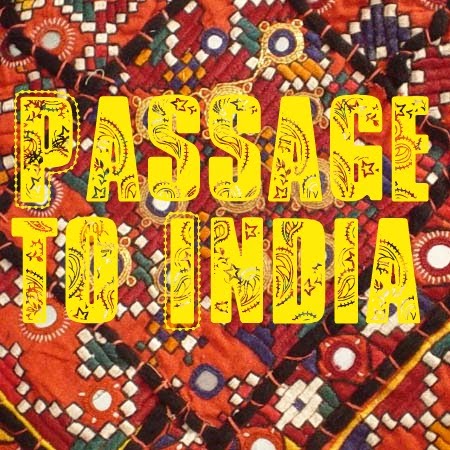Ajrakh Block Printing
"Ajrakh" is an Arabic world referring to the moment when the sun hovers on the horizon, and the sky is red, blue, and black dotted with stars.
The artisans of Dhemadka and Ajrakhpur have been making traditional Ajrakh block prints for eleven generations, attempting to capture that moment.
One artisan, Abdul Rauf, told me once that "in order to be a designer, you have to have your eyes open. Nature is a designer, so as an artisan designer you choose to either copy or edit the things you see and the traditions you learn."
Nature is definitely a part of the Ajrakh craft. One artisan told me that the craft was originally developed so that shepherds would stand out against the harsh desert landscapes of Sindh and Kutch, in contrast with the white and brown clothing they had previously worn.
The process involves a lot of water -- specifically, quality water. For this reason, artisans must dig deep into the ground to reach good water sources. With environmental changes in Kutch, however, the water tables are changing, and Dhemadka can no longer sustain the craft. For this reason, the community of Dhemadka decided to build a new village - called Ajrakhpur - closer to the city and near a better water source.
Today there are dozens of block printers in Ajrakhpur, with an increasingly international market. Ajrakh is probably my favorite craft that my organization (Khamir) works with.
The Process
 |
Several villages in Kutch specialize in wooden block-making,
selling to Ajrakhpur, Dhemadka, and elsewhere. |
 |
For every color a different block must be made. The block makers therefore have to
have a complex understanding of negative space. |
 |
That black gunk is actually the resist used to create white spaces on the cloth.
When the cloth is washed, it comes off, leaving the original color underneath. |
 |
| Colorful dyes waiting to be used. |
 |
The artisan uses blocks to create layers of design on long pieces of fabric.
They must be precise and quick. |
 |
Adding a layer of color requires matching up the block perfectly on the design.
Some textiles have four or five colors, and many more blocks. You can see the skill as the artisan works. |
 |
On the studio wall in Dhemadka, color has built up over time,
creating what I think is a gorgeous abstract design in itself. |
 |
| The cloth is dyed with a base color, then cleaned with water. |
 |
| Drying in the sun - some of these cloths will be further printed or dyed to create even more elaborate designs. |
 |
| A complete product. |
 |
This Ajrakh piece is over a hundred years old and made with natural dyes and traditional blocks
- some still being used today, some have been lost. |
 |
On a visit to Dhamadka (the original Ajrakh village), my coworkers and
I decided to make a handkerchief together - with varying levels of success.
I am responsible for the blocks WAY too close to the edge. |
 |
| Disha shows off our group effort. We were pretty proud of the design we created in the middle using blocks and my fingertips. You will also notice we signed our names in the corners. |



















No comments:
Post a Comment